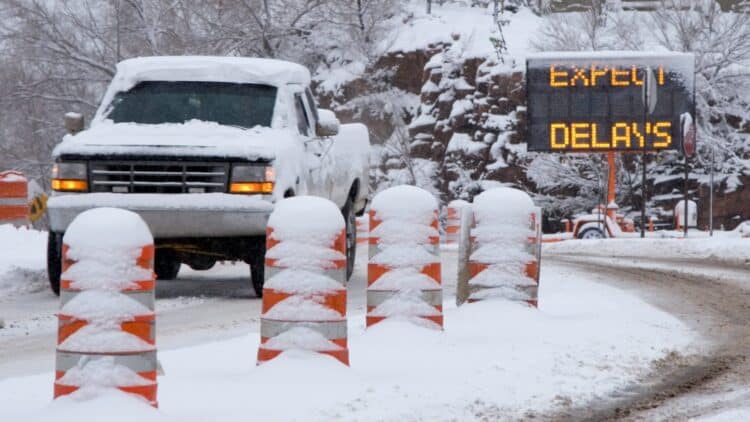Some people live for summer. Then there are others, like YouTuber Rachel Maximo, who only think about Halloween, even though it’s only the beginning of August. For winter lovers (and especially Christmas lovers), the arrival of the first snowfall is an event they eagerly await.
It’s already mid-September, so meteorologists are already warning of the first major snowfall of the season. David’s annual forecast says that the first snowfalls will be, as always, in the high mountains of the west (i.e., Wyoming, Montana, and Colorado). It will then move toward the Midwest and the Great Lakes region as autumn progresses. As always, Tired can give official warnings 12 to 48 hours in advance.
What can be considered a significant snowfall?
Meteorologists classify significant snowfalls as accumulations of snow capable of affecting the mobility of services. In other words, if it hinders traffic or prevents people from getting to work or school, a significant warning is issued.
The typical criteria for a winter storm warning are six inches of snow in 12 hours or eight inches in 24 hours. This depends largely on regional variations. On the other hand, if loose snowflakes melt on contact with the ground, it is not considered a danger to daily life.
Where and when does the first snowfall usually occur in the United States?
Starting in September, but especially in October, it usually snows in the northern highlands. Then there are the high plains, which are covered with snow in October. Starting in November, the Great Lakes and Ohio Valley usually follow suit. New England usually gets its first snowfall in late October or December, depending on latitude and elevation. For example, Colorado Springs usually gets snow on October 19, although it had an early snowfall in 1961, which began with a snowy day on September 3 of that year.
What does it take for snow to fall?
Although it may seem silly, two things are needed: cold and humidity. If one of these two things is missing, snow will not form. Weather reports can tell you the probability of snowfall, but you can’t know for sure until a few days before.
How to prepare for the first snowfall
Whether you’ve lived with snow all your life or are moving to a state where the ground is covered in snow for the first time, it’s better to be safe than sorry. The best tactic is to have the necessary equipment and tools for whatever may happen. Here is a list of things to check before you are caught off guard:
- Check your car tires and windshield wipers so that they can function properly if a snow storm catches you behind the wheel.
- Make sure you have a blanket, a pair of gloves, a LED flashlight, and a cell phone charger in your car. If you get snowed in in your car, you will be well equipped to hold on until help arrives.
- It sounds obvious, but avoid driving on the highway if you can while it’s blizzing. If it catches you by surprise, keep calm and stay in your car. Do not get out of it; you are safer inside.
- During a snowfall, follow the advice of local authorities and activate alerts on your cell phone.
It is also best not to drive unless absolutely necessary. We recommend buying enough food to last several weeks without going to the supermarket. Although it may be a hassle now, it is better to have a well-stocked pantry. No one likes having to go to Walmart when there are several inches of snow on the ground. Remeber to get ready, because “winter is coming”.

